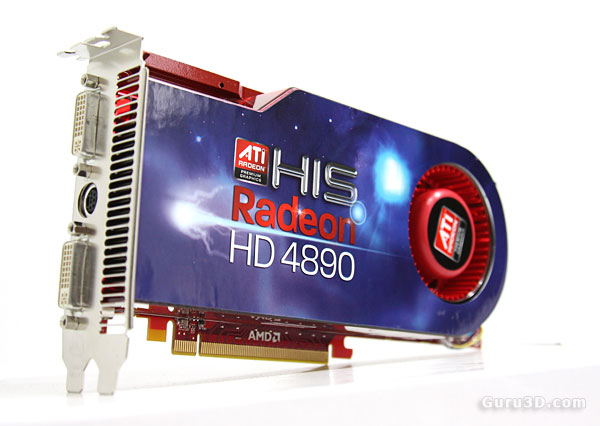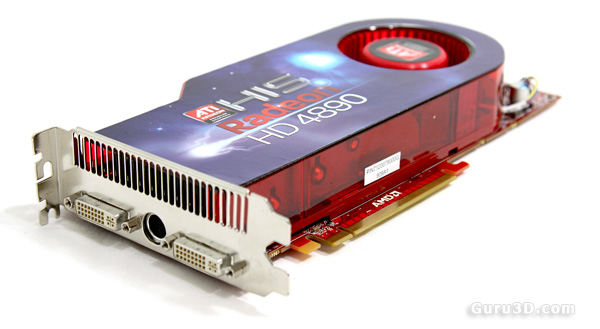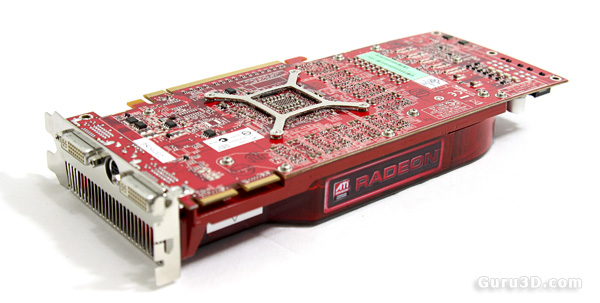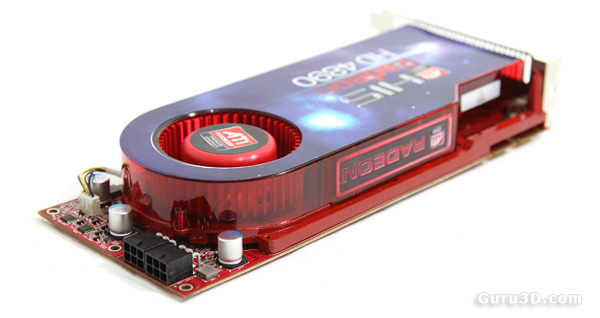The Radeon 4890 1024 MB pixelated
Radeon 4890 1024 MB
On the next few pages we'll show you some photos. The images were taken at high-res and then scaled down. The camera used was a Canon 450D 12 MegaPixel.

So here we have the Radeon HD 4890 with no less than 1024 MB of GDDR5 memory clock at 3900 MHz (effective). The card we received comes from the good fellas at HIS technology. The product will come with a slightly higher core clock frequency, 900 MHz opposed to 850 which will be the reference clock.

At first sight, the card looks just like the Radeon HD 4870 1024MB, but as we'll show you, there are some subtle differences.
Connectivity -- two DVI connectors. Both dual-link DVI of course, in the middle you'll find a 7-pin HDTV-out mini-din, a user can plug an S-video cable directly into the connector, or use a dongle for YPrPb (component) or composite outputs, or use the 3-way RCA HDTV analog connector.

Both DVI connectors are dual-link (and HDCP capable). High-def screens and high-resolution monitors are the key issues here. Dual-link DVI pins effectively double the power of transmission and provide an increase of speed and signal quality; i.e. a DVI single link 60-Hz LCD can display a resolution of 1920 x 1080, while a DVI dual-link can display a resolution up to 2560x1200 and I believe this can go even higher.
With the help of the supplied DVI to HDMI adapter you can connect the card to an HDMI HD Ready television or monitor for good picture quality and as explained, sound over HDMI. This card will forward 2 channel PCM or deal with 5.1 / 7.1 channels at your preference (AC3).
Slightly difficult to see, but two Crossfire fingers are on the lower left corner, obviously allowing you to go for CrossfireX. The Crossfire connectors will be supplied with the graphics cards by the way.

Here we have the external power connectors. You connect your power supply to these 6-pin power connectors. This card's TDP is roughly 190 Watts (peak) maximum. With an idle wattage of 60 Watts. The IDLE wattage can be this low due to flexible and dynamic clock frequencies on the GPU and lowering voltages based on GPU usage.
